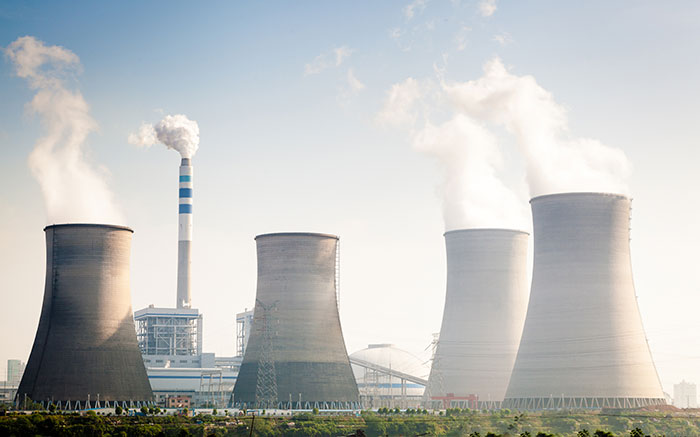
Image © Shutterstock
A major part of the government’s energy strategy is a programme of eight new nuclear power stations, to be funded by the Regulatory Asset Base (RAB) funding method.
One of the main features of RAB is that it involves consumers paying from the start of construction for benefits they will only begin to receive when construction is completed, and the plant is producing electricity.
One of the key questions that should be answered in assessing whether a RAB-funded project should go ahead is whether the eventual benefit consumers could receive, in this case through cheaper electricity charges in the long run, is enough to compensate them for the opportunity cost of the payments made while receiving no benefit.
Given the long construction periods now anticipated for new nuclear plants, it is unlikely that RAB financing will be able to attain a sufficient cost advantage to do so.
In 2019, the National Infrastructure Commission (NIC) produced a paper on the application of the RAB approach to nuclear energy, illustrating a methodology including an approach to answering the above key question.
The NIC paper set out the results of illustrative calculations of the impact of a range of factors on the likely value for money of RAB projects.
Unfortunately, it is something of a mixed bag. On the negative side, the results in the paper are not presented in a way that allows the impact of different factors to be separately identified: and, critically, the NIC makes a central assumption about the likely length of the construction period for new nuclear projects only about half of what the government now assumes.
On the plus side, having clarified with the NIC what methodology it was using in the opportunity cost component of their model, their basic approach seems sensible.
Although not clear from the original NIC paper, the length of the construction period has a critical effect on the likely value for money of a RAB-funded nuclear project.
If the NIC’s basic model is applied to a project with the government’s current assumption of a 13-to-17-year-long construction period, instead of the NIC’s central assumption of eight years, then RAB nuclear is unlikely to achieve a sufficient cost advantage over alternative approaches to compensate consumers for the opportunity cost of their initial payments.
RAB has been applied in the UK since the Thatcher-era privatisations to fund capital expenditure on regulated utilities, such as the water industry in England.
It involves the regulator approving the amount of capital expenditure the utility operator will undertake.
The regulator then makes an assumption about the real cost of borrowing for the utility operator, and what a reasonable real rate of return would be on the equity component of funding.
These assumptions are then translated into an annual real charge the utility operator is permitted to levy on consumers, from the date on which the capital expenditure is undertaken, until the end of the productive life of the asset.
These guaranteed returns should enable the operator to borrow more cheaply, which is one of the key advantages of RAB, but a downside is that the consumer has to pay charges during the construction phase, before receiving any benefit.
There are other disadvantages to RAB, such as the potential for the regulator to be unduly generous in its original assumptions, or for the utility operator to game the system in a number of ways. But these other downsides are not the subject of this note.
The problem is how to calculate whether the initial costs for consumers under RAB are outweighed by the future benefits.
This is actually a standard problem in investment theory, and the answer will depend on a consumer’s time preference for money. (If a consumer has a time preference rate of 5%, they will be indifferent between having £100 in their hand now, or £105 a year hence, and so on.)
If we know this, then we need to use this as the discount rate to work out the net present value at today’s prices of the costs the consumer is going to incur during the initial construction period.
Similarly, the net present value of the consumer’s assumed benefits is calculated, again discounted at the same time preference rate.
If the net present value of the benefits is greater than the net present value of the costs, the RAB funding approach will represent value for money for that consumer, and vice versa.
It was not immediately apparent when reading the paper, but I have confirmed with NIC that it is this standard approach it has adopted in the relevant part of its model.
The standard approach depends on making an assumption about the consumer’s time preference for money. This is likely to be unknown, and will also vary from consumer to consumer.
To get around this problem, the NIC adopted the sensible approach of looking at a range of values, ranging from real values of 3.5% to 10%.
There is a good discussion in the paper of how it arrived at this particular range, based on the relevant literature, as well as acknowledgement that for some the rate might be a good deal higher than 10%.
So far so good: the NIC has adopted a standard method for assessing whether consumers will be adequately compensated for the initial payments they will be making during the construction period and assumed a sensible range of time preference rates.
Unfortunately, however, the way it has applied this approach obscures the effects of variations in the length of construction period.
The approach is also misleading because it takes as its main assumption an eight-year construction period, stating it is consistent with government assumptions, but by 2021 (two years after the NIC paper was published) the government assumed a much longer length of construction of between 13 and 17 years – about twice as long – in its paper Impact Assessment, Regulated Asset Base model for new nuclear.
In addition, the NIC paper looks at the effects of varying factors such as the length of construction period, consumers’ time preference rate, degree of risk transfer to the private sector, and scheme type.
In effect, it defines an envelope of assumptions, within which these different factors may vary.
It then works out the extreme variation, as assumptions vary within this envelope. But what it does not do is to illustrate the effects of varying the different factors individually, so the separate effects of the different factors are obscured.
It is not difficult, however, to develop a model in order to examine the effect of different lengths of construction period.
For the purposes of this model, I have assumed that the productive life of a nuclear power station will be 60 years, which is the assumption the government makes in its 2021 paper referred to above.
It is also assumed that real RAB charges per unit of output will be constant through the production period – again, this is in line with the government’s 2021 paper.
A neutral assumption has been made that there will be a flat real profile of capital expenditure during construction.
Given these assumptions, it is fairly straightforward to calculate how much cheaper RAB electricity prices would have to be, compared to the next cheapest alternative, to compensate consumers for the opportunity cost of the initial charges they will have paid.
The answer, of course, will be a function of the length of the construction period, and of the consumer’s time preference rate for money.
Let’s look at the case first of all where the time preference rate is at the lower level assumed by NIC: that is, 3.5% real. In this case, when a construction period length of eight years is assumed, the best alternative method would have to be at least 20% more expensive than RAB for consumers to be compensated for the opportunity cost of their initial charges.
For a 13-year construction period, this rises to 32%; and for a 17-year length of construction, the best alternative would have to be at least 44% more expensive than RAB.
Meeting these targets would be challenging enough for RAB. But the situation gets dramatically more challenging if consumers’ time preference is at the upper end of the range assumed by NIC, namely, at 10% real.
In that case, for an eight-year construction period, the best alternative would have to be at least 57% more expensive; for a 13-year construction period, this rises to 108%, and for 17 years to 163%.
It appears unfeasible that either of these later figures could possibly be realised in practice.
So the implication is, for the lengths of construction period now being anticipated, it appears very unlikely consumers with moderate to high time preference rates for money will be anywhere near compensated for the opportunity costs of their initial RAB payments.
Indeed, it appears unlikely that even consumers at the lower end of the time preference range would be compensated either.
In November 2022 I informed the NIC about the results of the above modelling, and I suggested that it would be appropriate for NIC to update its modelling in light of the government’s latest assumptions on the likely length of construction period.
This was something the NIC declined to do.
There are important implications arising from the results described in this note:
It is now clear, given the very long construction periods the government foresees for new nuclear plants, that many consumers will never be adequately compensated for the initial RAB payments they will be forced to make. This calls into question the whole justification for going down the RAB route for nuclear funding.
It will be essential, before any new nuclear projects are signed off under the RAB funding method, that an appropriate methodology is applied to establish value for money. The basic methodology proposed by NIC looks appropriate for this, but it will have to be applied in a way that makes sensible assumptions about the length of construction period, and which enables the effect of construction period length to be directly examined.
The NIC itself should change its stance, and should update the modelling in its 2019 paper to reflect the government’s current assumptions on likely length of construction period. It should also improve the presentation of its modelling results, so the effects of the individual factors they consider in their model can be separately identified.










